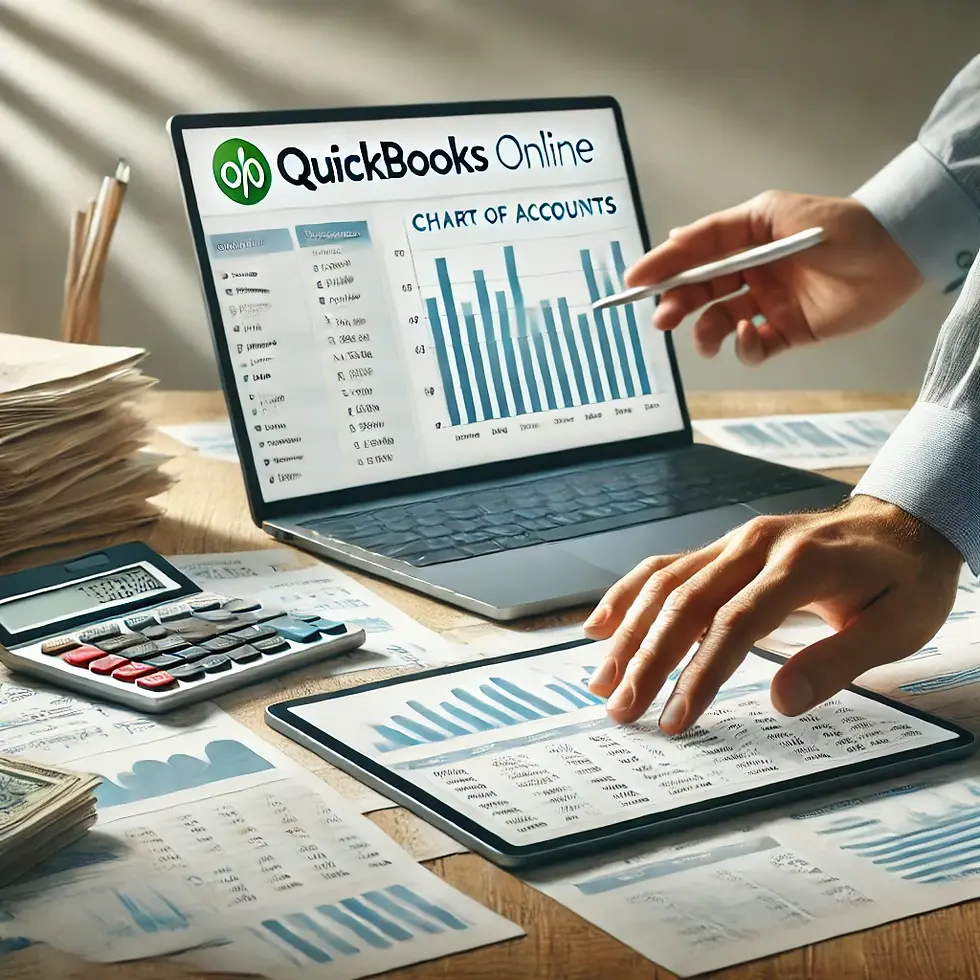"Unlocking the Power of QuickBooks Online: Essential Features for Small Business Owners"
- Charles Stoy
- Aug 12, 2024
- 3 min read
As a small business owner, managing your finances effectively is crucial. QuickBooks Online (QBO) is an excellent tool that can help you keep track of your income, expenses, and overall financial health. In this blog post, I will explain the basic features of QuickBooks Online and how it can benefit your business. We’ll go step by step, making it easy enough for you to use, understand, and follow.
First, let's discuss what QuickBooks Online is. QuickBooks Online is a cloud-based accounting software that helps small businesses manage their finances. It allows you to track income and expenses, making it easier to monitor where your money is coming from and where it's going. Additionally, you can create invoices to easily bill your customers and keep track of payments. The software also lets you generate reports to understand your business’s performance and manage payroll, handling employee payments and tax filings efficiently.
Now, why should small businesses use QuickBooks Online? QuickBooks Online can help small businesses by saving time through the automation of routine tasks like invoicing and payroll. It improves accuracy by reducing human error in financial calculations. Furthermore, it provides insights by generating reports that enable informed business decisions. Lastly, it enhances accessibility by allowing access to your financial data from anywhere with an internet connection.
Next, here's a simple guide to get started with QuickBooks Online. Begin by signing up on the QuickBooks Online website and choosing the plan that best fits your business needs. Enter your business information, such as the name, address, and contact details. Connect your business bank account to QuickBooks Online to automatically import transactions. Finally, customize your invoices by adding your logo and preferred payment terms.
Once you’re set up, you can start using QuickBooks Online for basic tasks. To track income and expenses, manually enter your income and expenses or review the transactions imported from your bank. Categorize each transaction to keep your records organized. For creating and sending invoices, go to the “Sales” tab, click on “Invoices”, and then “New Invoice”. Fill in the customer’s information, the date, and the items or services sold, then click “Save and send” to email the invoice to your customer. To generate reports, navigate to the “Reports” tab and select “Profit and Loss” to see your income, expenses, and net profit over a specific period. For viewing your assets, liabilities, and equity, select “Balance Sheet” under the same tab.
Let's walk through a basic example of how to track expenses in QuickBooks Online. To enter an expense, go to the “Expenses” tab and click “New Expense”. Fill in the details, such as the payee, date, amount, and category (e.g., office supplies), then click “Save and close”. To review your expenses, go to the “Expenses” tab to see a list of all your expenses, and filter by date, category, or payee to find specific transactions.
To maximize your use of QuickBooks Online, regularly reconcile your accounts to ensure your QuickBooks records match your bank statements and avoid discrepancies. Utilize the mobile app to manage your finances on the go. Set up recurring transactions to automate regular expenses or invoices and save time.
In conclusion, QuickBooks Online is a user-friendly tool that can help small businesses manage their finances efficiently. By following these simple steps, you can start using QuickBooks Online to track your income and expenses, create invoices, and generate important financial reports. If you have any questions or need further assistance, feel free to reach out!



Comentarios